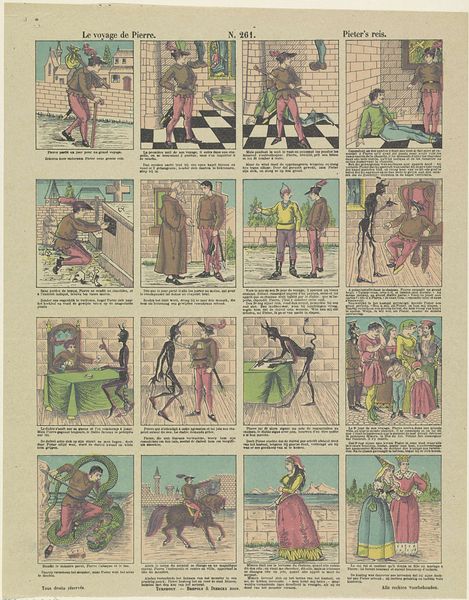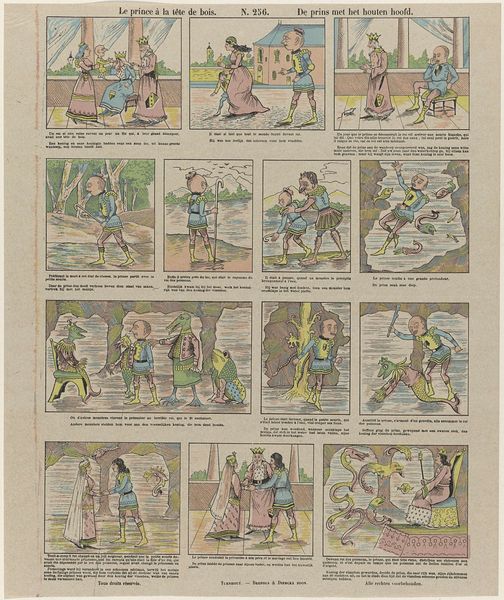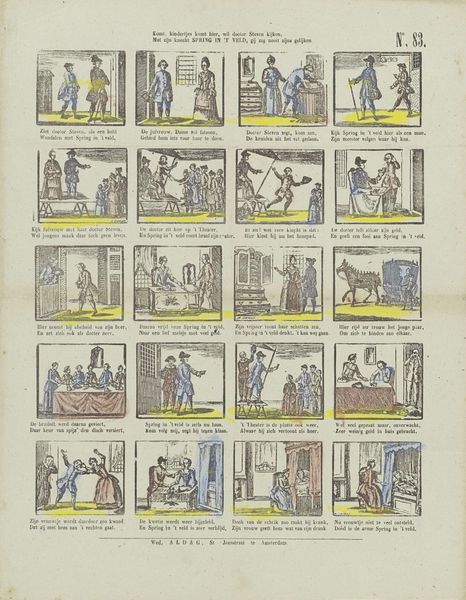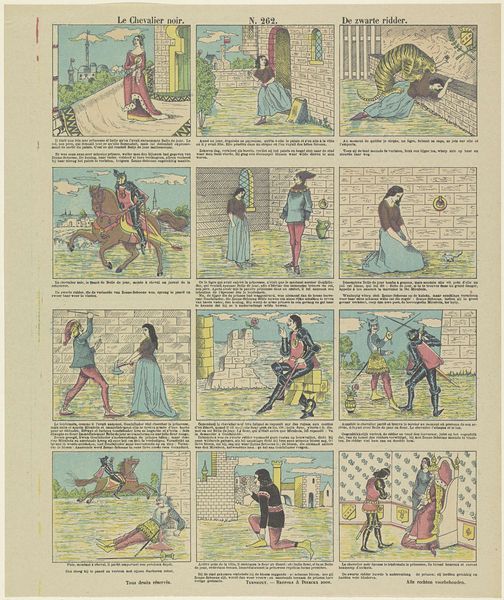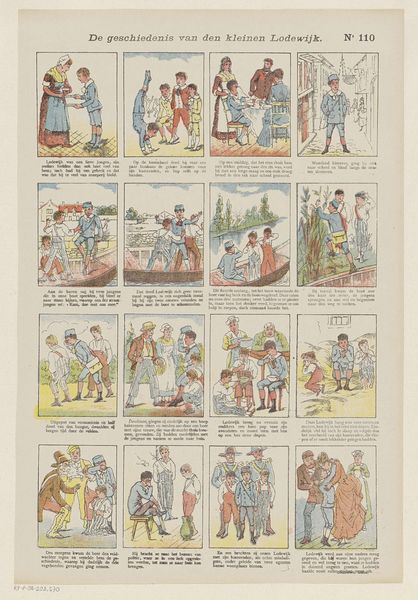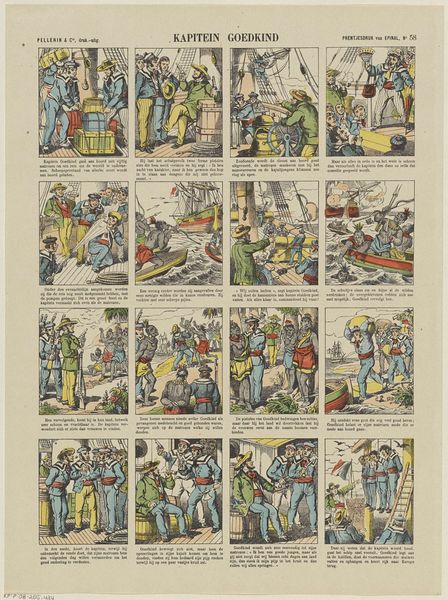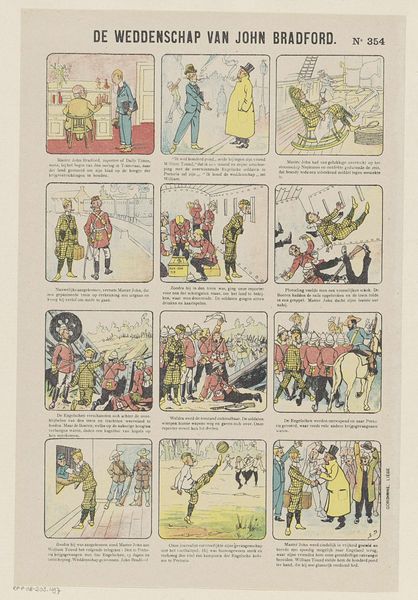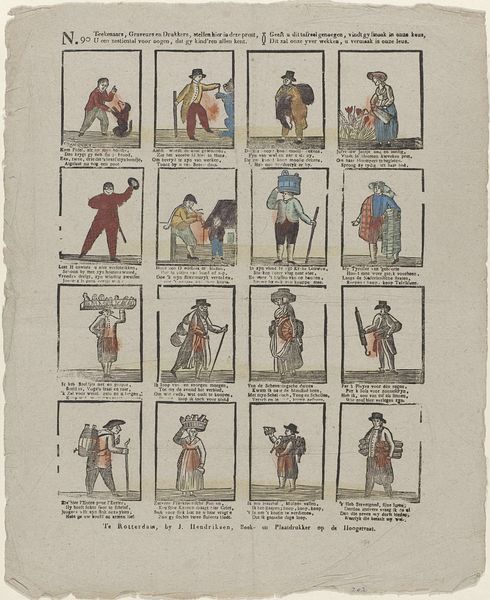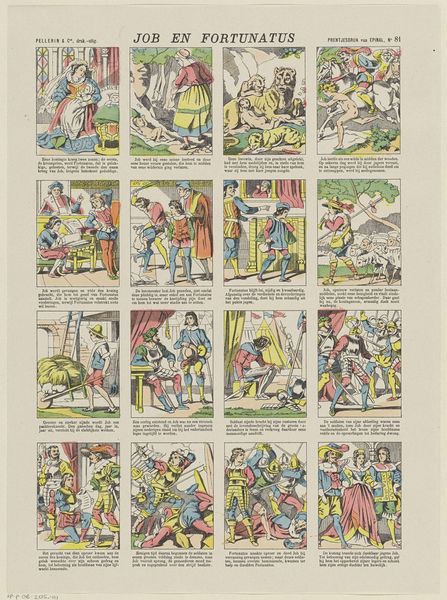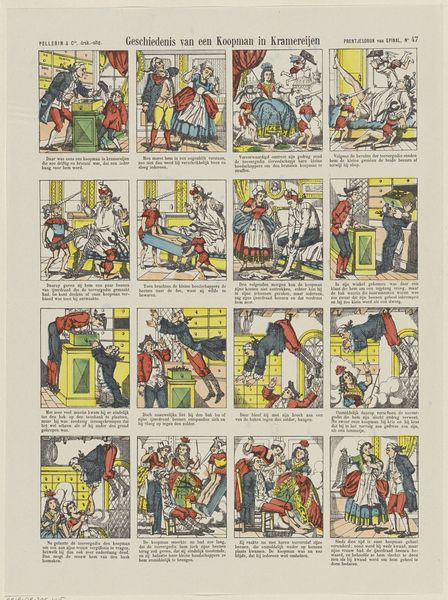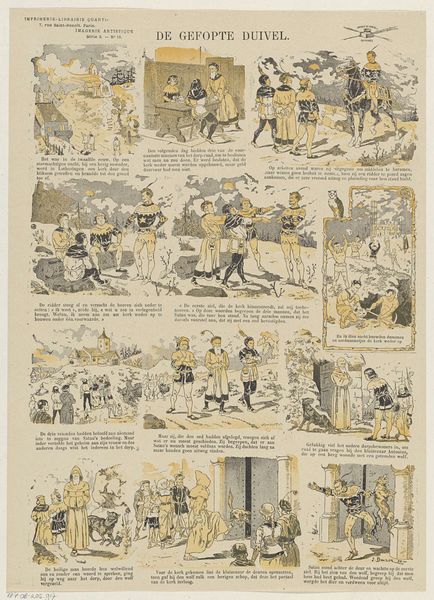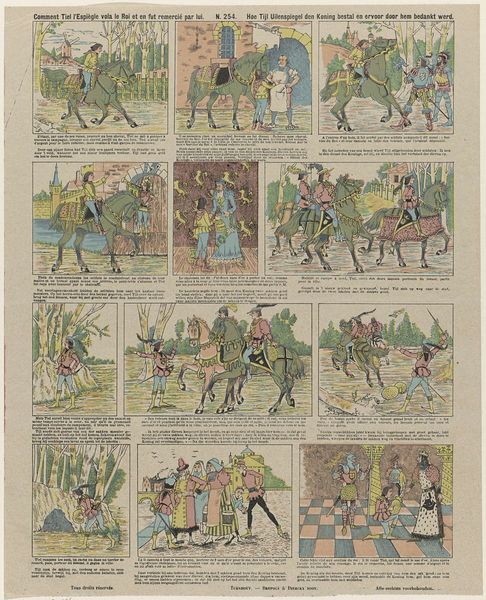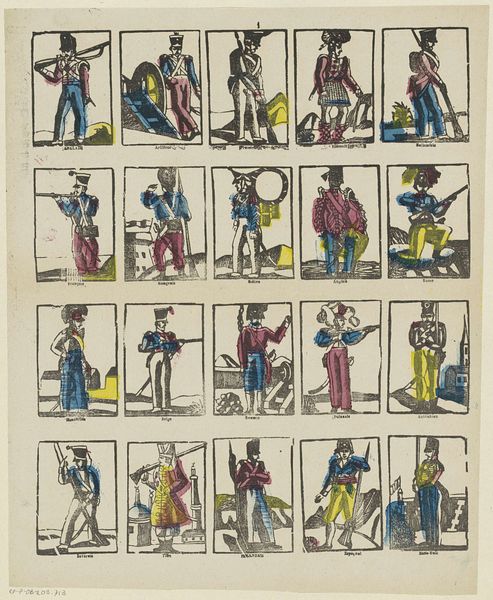![Le voyage de [Pierre / Pieter's reis] by Brepols & Dierckx zoon](/_next/image?url=https%3A%2F%2Fd2w8kbdekdi1gv.cloudfront.net%2FeyJidWNrZXQiOiAiYXJ0ZXJhLWltYWdlcy1idWNrZXQiLCAia2V5IjogImFydHdvcmtzL2IwNzI5NDFjLTJmOWMtNGUyNy1iZTAzLWVlMDlhM2ZlNzAxMC9iMDcyOTQxYy0yZjljLTRlMjctYmUwMy1lZTA5YTNmZTcwMTBfZnVsbC5qcGciLCAiZWRpdHMiOiB7InJlc2l6ZSI6IHsid2lkdGgiOiAxOTIwLCAiaGVpZ2h0IjogMTkyMCwgImZpdCI6ICJpbnNpZGUifX19&w=3840&q=75)
drawing, print, paper, ink
#
drawing
#
fairy-painting
#
comic strip sketch
#
narrative-art
# print
#
figuration
#
paper
#
ink
#
comic
#
watercolour illustration
#
history-painting
Dimensions: height 365 mm, width 307 mm
Copyright: Rijks Museum: Open Domain
Curator: Examining "Le voyage de [Pierre / Pieter's reis]", a comic strip created by Brepols & Dierckx zoon sometime between 1833 and 1911, reveals a narrative told across multiple panels using ink and print. Editor: It has the look and feel of an antique broadside, and the colors certainly create a sense of aged whimsy, even quaintness. It makes me wonder about its reception and purpose at the time it was made. Curator: Absolutely, the material aspect is key; it seems that this was made through a meticulous process, perhaps involving lithography, allowing for reproducibility but also retaining the characteristics of handmade art, a blurring of production processes, that makes categorization hard. The narrative unfurls linearly, inviting the viewer to follow Pieter's journey in a chronological order. There is something visually compelling in this simple format. Editor: What stands out is its relation to a wider tradition of storytelling through accessible forms, and considering the materials used–paper and ink combined with the printing press—highlights a commitment to spreading the tale to a wider audience, regardless of economic or social class. And look at the details, it is carefully crafted with cross hatching shading to give a greater sense of depth, revealing something of the printer's skill, even mastery. Curator: Note also the artist's employment of clear, contained shapes; a deliberate structuring to clarify the sequence for easy engagement and reading. We can deconstruct each vignette in relation to one another through their symbolic resonance within a greater historical framework of folk narratives and popular education. Editor: Yet that framing could also serve ideological purposes—think about the production of inexpensive materials facilitating the spread of certain beliefs and behaviours, effectively binding narratives that could shape understanding across generations. Curator: An insightful observation, and an interesting dimension for thinking about its construction, distribution, and visual presentation within its historical period! Editor: Agreed! Overall, thinking about the work through both form and process helps to unpack not just artistic intent but the broad influence and reception it had then, and has now as an artifact.
Comments
No comments
Be the first to comment and join the conversation on the ultimate creative platform.
